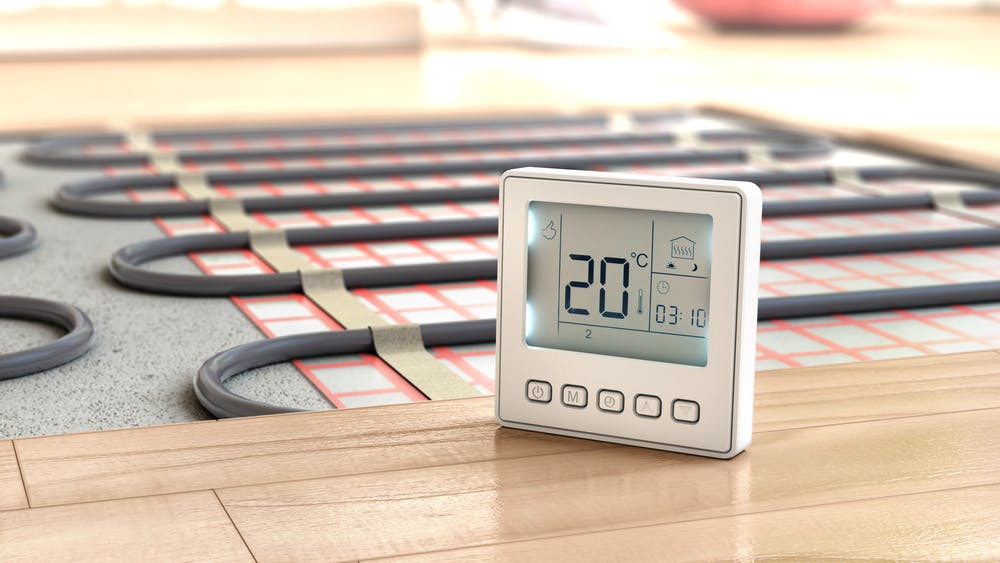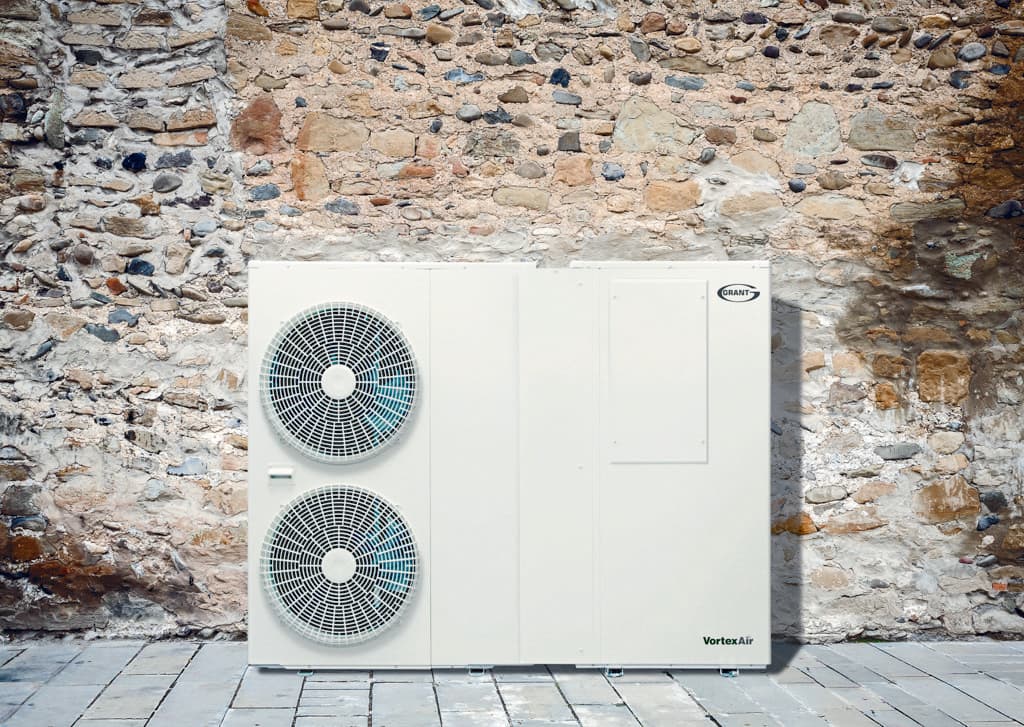Underfloor Heating Guide

Have a new build or extending your property? Underfloor heating could be the perfect effective and efficient central heating system for you. With this version of heating being 15-40% more efficient than regular radiators, it is perfect for the UK’s unpredictable winter climate.
How does underfloor heating work?
Underfloor heating is a central heating system that acts as a replacement for radiators.
Usually, traditional radiators heat up your room via convection currents. This is where heat from the radiators rises and circulates around the room. Commonly, this can result in uneven heating of the room, where some areas of the room may feel warmer than others.
With underfloor heating systems, a set of pipes or wires under the floor, heat the room evenly due to heat rising from the floor. Once the air cools, it falls. This system allows your room to stay a consistent and regular temperature throughout the whole room, unlike with radiators.
Installation of underfloor heating
During the construction of a new build, wet underflooring heating is installed. During this process, a layer of insulation is installed above the concrete to prevent the underfloor heating pipes from heating the concrete. Over this, a layer of screed (like concrete) is placed on top to secure the pipes and smoothen the surface above the pipework system, to ensure an even level underneath your floorboards or tiles.
The pipework system is connected to a manifold (a system controlling the distribution of hot and cold water through the pipework of underfloor heating) which is securely connected to your main source of electricity. This can be connected to your boiler, solar PV systems and heat pumps.
How to use underfloor heating
With Warmaway, both types of underfloor heating methods we provide can be controlled by floor sensors, room thermostats and digital clocks for ease of managing your underfloor heating systems.
Types of underfloor heating
There are two types of underfloor heating which can be installed depending on where you want the installation to take place.
Type 1: Wet underfloor heating
Wet underfloor heating (also known as water underfloor heating) is installed through setting down thick durable pipes. Through this, hot water at around 35-50°C travels through the pipes to heat the floor and therefore the room.
This method of underfloor heating is usually suitable when installing at the time of construction. It is prevalent when changing your heating systems in more than one specified area.
However, wet underfloor heating can be still installed on existing property. Although, it will require more disruption to parts of your property due to the excavation required for suitable conditions to lay the pipework.
Type 2: Dry electric heating
Dry electric heating involves ultra-thin wires heated by your main source of electricity. This is then installed beneath the floorboards of the room.
This method of underfloor heating is usually installed for one specific area such as bathrooms, kitchens, and conservatories.
How much does underfloor heating cost?
This entirely depends on the space you require to have the underfloor heating installed at, as well as whether installation will occur on existing or new build property. As an estimate, underfloor heating can range from £4,000 to £11,000 in total.
Whilst this may seem like a lot, it is more energy efficient than radiators and is long-lasting with a lifespan of around 50 years.
Advantages of underfloor heating
So, what are the main benefits of installing underfloor heating?
- Increased space in the room – due to the heating systems being beneath the floor, underfloor heating reducing bulk created by radiators.
- Low operating costs – underfloor heating uses less energy to heat the water up through the underfloor piping. This is because the water needs to be a lower temperature so that the floor is safe to walk on.
- Even heat distribution – it removes the issues of having cold spots or overly heated areas in the rooms, providing quality and luxury comfort in your home.
- Compatible with renewable energy systems – underfloor heating can be paired with your solar PV systems and heat pumps to ensure increased efficiency and reduce your carbon footprint.
Disadvantages of underfloor heating
Here at Warmaway we want to ensure you have the full picture of both the advantages and disadvantages of underfloor heating.
- Time to heat up – usually underfloor heating takes a little longer to heat up than traditional radiators, so it is always recommended to switch it on before needed.
- Cost – the initial cost of installing underfloor heating can be expensive, especially when installing on existing property due to disruption from upheaval needed to lay the system.
- Better suited for new builds – with costs of installation, underfloor heating is cheaper and takes less time to install on newer builds.
How effective is underfloor heating?
Overall, underfloor heating systems are effective in evenly heating your home. This method of heating is cheaper to run and is 15% more efficient than a radiator and 40% more efficient when paired with a heat pump. With this in mind, the investment is worth the savings. Alongside this, with the government plans for the boiler ban and current high energy prices, this is a fantastic long-term central heating solution on your journey to efficient green energy.
Find out more about underfloor heating from Warmaway
Interested in enjoying the luxury of underfloor heating? Contact us today.


